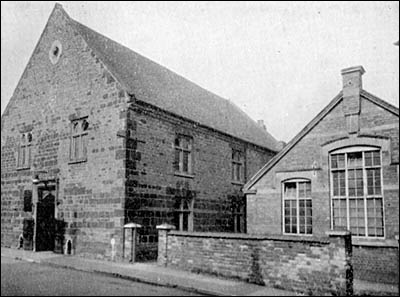|
|||
|
|||
|
"Dissenter" burials happened when a non-denominational funeral occurred within the grounds of St Marys Church. As of this time, the local Baptist Church had no cemetery of their own, so this was a relatively regular occurrence. However, there was an incident, which occurred in July1835 that brought things to a head and was widely reported in the local and national press. There appears to have been the death of a child within the parish, but the child was born out of wedlock, had not been baptised and the family were of the Baptist faith. This meant that the Rector of St Mary's, Mr Grimshaw, could not deliver any sort of burial service. The family were informed of this and contacted the local Baptist Minister, Mr Rees. However, Mr Rees was indisposed, so the family again requested if Mr Grimshaw could assist. Mr Grimshaw stated that he could not deviate from the rules of the established Church and he must leave the matter in the hands of their own minister, if he could not officiate then he must provide an alternative. There was some confusion as to who would seek out an alternative, with Mr Grimshaw (upon Mr Rees consent) offering to send a servant to Kettering to request a Baptist minister attend Burton Latimer. By this time the family were in some distress, and although ill, Mr Rees attended the churchyard to perform the burial ceremony. However, it seems that he was met with some resistance by the Church Curate, Mr MacPherson, with the Curate threatening to send for the Churchwardens and local Constable to stop the Baptist Minister officiating at the burial ceremony. After some confrontation the Rector decided it best to proceed as before and Mr Rees completed his task. As a consequence of these actions, several letters were sent to the local newspaper including correspondence by both Mr Grimshaw and Mr MacPherson. On 17th August 1835, Mr Rees decided to give his account of proceedings and composed a lengthly letter to the "Northampton Mercury". Within the letter he refuted claims that during the ceremony he had used disrespectful language towards Mr MacPherson and the churchwardens. Mr Rees also explains that he felt there was a misunderstanding as to what was to occur and he did not claim the right of exercising ministerial right within the churchyard. Mr MacPherson responded with a letter to the same publication, published on 22nd August 1835. In this he states that the facts he outlined were testified to by the Churchwardens present at the time. Mr MacPherson stood by his claim that no unordained person could officiate within Church of England boundaries, and even then there is a specific format which is outlined in the book of common prayer. The Curate also mentions an encounter with Mr Rees a few days later. The Rector, Mr Grimshaw, was awaiting a coach to depart from Burton for a few days, Mr MacPherson and another clergyman were present to bid him farewell. Whilst waiting, the churchmen saw Mr Rees approaching, Mr MacPherson offered his hand, saying "That as we both profess to be ministers of the Gospel of peace, let us forget this difference ever occurred." Mr Rees agreed to this, and when questioned about the correspondence to the local press replied that he was acting as a citizen, wishing to claim the rights of his fellow citizens, which elicited a strong response from the three. After this Mr MacPherson said to Mr Rees that his only regret was that he did not breach the matter in private before Mr Rees was within the walls of the burial ground, and he still stood by his original decision. He finishes the letter by saying that he does not have any unkindly feeling towards the Baptist Minister and merely wishes to correct any false impressions that may have occurred. The final letter was a much shorter, sent by Rev. Grimshaw and published on 29th August 1835. It is at this point that Mr Grimshaw actually gives a description of circumstances, but without naming the family in question. Mr Grimshaw states that his main objective was to ease the suffering of the family and perform an act of accommodation for the Dissenting Minister. This incident led to considerable discussion, within Northamptonshire and farther afield. This led to Mr Grimshaw contacting Dr Lushington (an expert in theological matters) some weeks later to seek clarification on the matter. The response can be seen by clicking here. As a consequence of this, the Baptist Church sought out its own burial ground which was finally established in the town by1844.
|
|||
